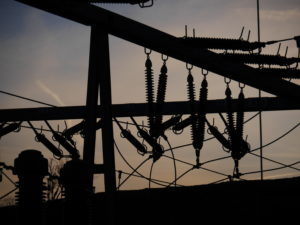
The University of the Virgin Islands (UVI) Caribbean Green Technology Center (CGTC) has announced the release of “Powering Through a Blackout,” a resource guide for energizing various devices and tools for times when power goes out.
“We Virgin Islanders are no strangers to frequent and prolonged blackouts, and we are always on the lookout for affordable solutions to keep the lights on,” said Greg Guannel, director of the CGTC. “To fill this gap in demand for resilient solutions, we created a guide to offer a series of comfort and life-saving solutions for powering through blackouts.”
“These solutions can fit a variety of budgets and situations,” Guannel said. “Ideally you want to invest in a solar and battery system for your house, but this is often out of reach financially for a lot of us, or even impossible if we rent. The guide provides solutions at different price points that can build resilience and fit your needs.”
The resource guide shows a variety of small-scale renewable energy devices and kits that can substitute everyday necessities in times of emergency or when the electricity supply is unreliable. For example, one can invest in solar lanterns, solar light bulbs and outdoor sensor lights that range between $10-$30. Solar power-banks with a starting price around $30 can charge USB devices such as cell phones, mini-fans or mosquito zappers. For water needs, there are solar showers, solar water pump kits to get water out of cisterns without relying on buckets, as well as water purifiers to ensure that the water meets safe consumption standards.
The resource guide also provides tips for using batteries to power devices that residents may already have. For example, car batteries are great for small items such as laptops or battery chargers. For bigger items, such as fridges or Continuous Positive Airway Pressure (CPAP) machines, deep cycle batteries might be more appropriate. Finally, the guide provides tips on how to charge the batteries using solar panels and other devices.
“Generators can be expensive to operate, and what if we can’t get gas? The resource guide provides you with ideas for investing in comfort and life-saving items that would get you through, no matter what, using the power of the sun,” said Ariel Stolz, assistant director of CGTC.
The guide is one of many resources available to Virgin Islanders to start investing in renewable power solutions and improve their quality of life on the islands. CGTC also provides tools to estimate how much energy is consumed on a monthly basis and calculate renewable power needs. This is especially important for persons who want to invest in bigger systems.
The Virgin Islands Energy Office is also assisting homeowners by offering many resources such as tools to calculate energy bills savings through the net-billing program, a streamlined permitting process for renewable energy systems and rebates on investments in energy-efficient appliances through their website at http://energy.vi.gov.
For more about small-scale renewable energy devices and batteries, what they can power and how to charge them, “Powering Through a Blackout” flyers are available across the territory and on the CGTC website at www.cgtc-usvi.com.